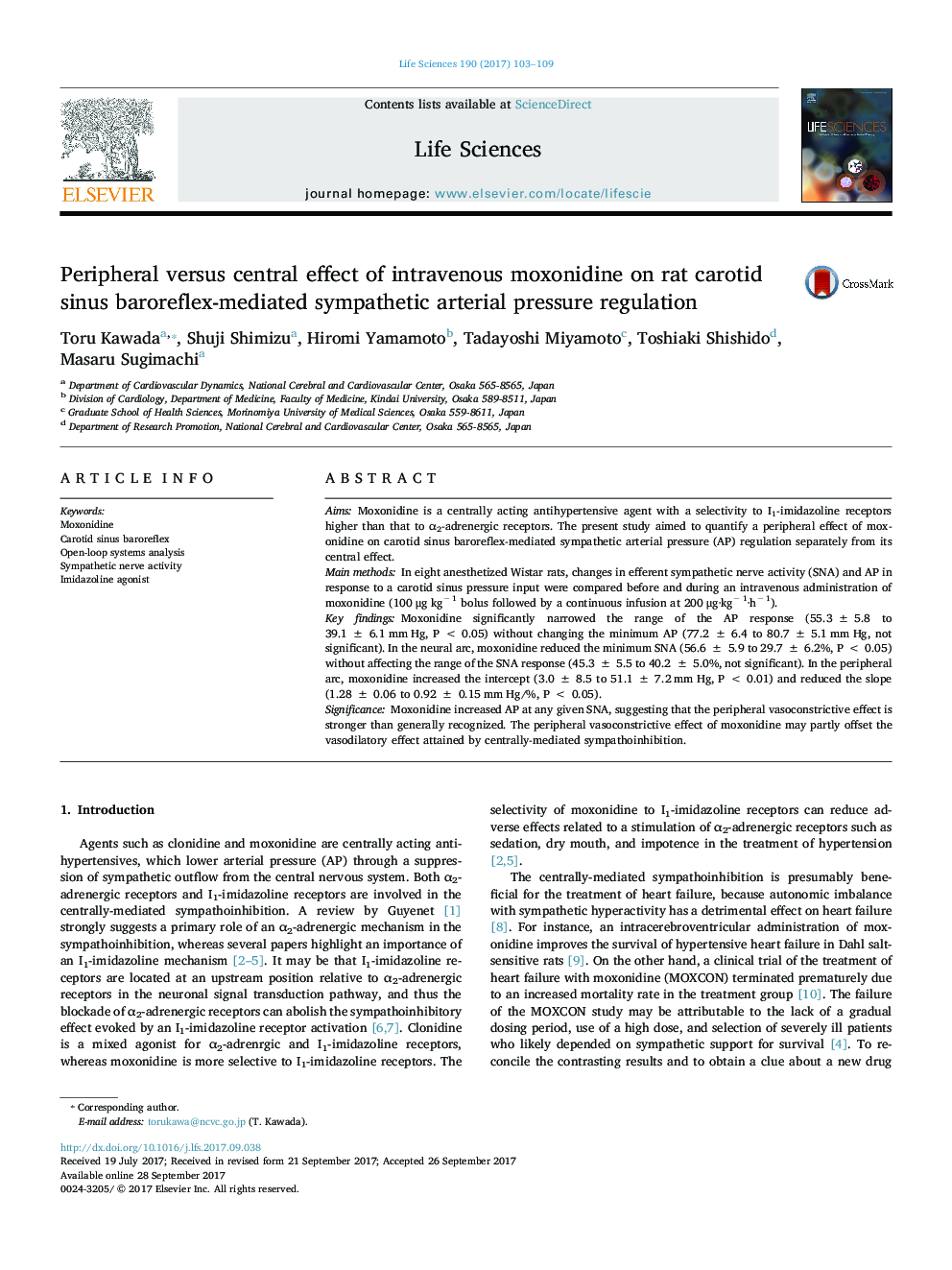| Article ID | Journal | Published Year | Pages | File Type |
|---|---|---|---|---|
| 5556728 | Life Sciences | 2017 | 7 Pages |
AimsMoxonidine is a centrally acting antihypertensive agent with a selectivity to I1-imidazoline receptors higher than that to α2-adrenergic receptors. The present study aimed to quantify a peripheral effect of moxonidine on carotid sinus baroreflex-mediated sympathetic arterial pressure (AP) regulation separately from its central effect.Main methodsIn eight anesthetized Wistar rats, changes in efferent sympathetic nerve activity (SNA) and AP in response to a carotid sinus pressure input were compared before and during an intravenous administration of moxonidine (100 μg kgâ 1 bolus followed by a continuous infusion at 200 μg·kgâ 1·hâ 1).Key findingsMoxonidine significantly narrowed the range of the AP response (55.3 ± 5.8 to 39.1 ± 6.1 mm Hg, P < 0.05) without changing the minimum AP (77.2 ± 6.4 to 80.7 ± 5.1 mm Hg, not significant). In the neural arc, moxonidine reduced the minimum SNA (56.6 ± 5.9 to 29.7 ± 6.2%, P < 0.05) without affecting the range of the SNA response (45.3 ± 5.5 to 40.2 ± 5.0%, not significant). In the peripheral arc, moxonidine increased the intercept (3.0 ± 8.5 to 51.1 ± 7.2 mm Hg, P < 0.01) and reduced the slope (1.28 ± 0.06 to 0.92 ± 0.15 mm Hg/%, P < 0.05).SignificanceMoxonidine increased AP at any given SNA, suggesting that the peripheral vasoconstrictive effect is stronger than generally recognized. The peripheral vasoconstrictive effect of moxonidine may partly offset the vasodilatory effect attained by centrally-mediated sympathoinhibition.
Graphical abstractDownload high-res image (223KB)Download full-size image
